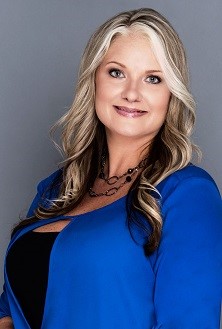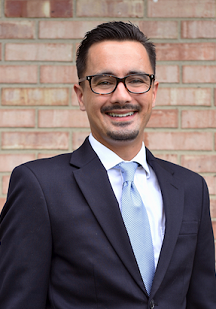FIX AND FLIP LOANS:
HOW MUCH CASH DOES THE FLIPPER HAVE TO CONTRIBUTE?
Leverage is an Important Issue To Home Flippers
Most home flippers only have a limited amount of cash or seed capital with which to work. If a miserly fix and flip lender required that the flipper contribute, say, a whopping $60,000 in order to qualify for a fix and flip loan, the flipper might not be left with enough cash to start his next flip, while the first house is up for sale. The flipper might be forced to twiddle his thumbs for two to three months out of the year as he awaits an ealier flip to sell.
Commercial Banks Require That the Flipper Contribute a Whopping 25% to 30% of the Total Cost of the Project - Ouch! (Don't Panic.)
In real life, very few home flippers ever use a commercial bank to finance their fix-and-flip. The reason why is because banks are soooo slow. By the time a commercial bank ever approved your fix and flip loan, your target property would be long gone - sold to a faster, more nimble flipper. In real life, the vast majority of all home flippers use a private money lenders, like Blackburne & Sons Realty Capital Corporation (est. 1980), to finance their renovation project. Private money lenders will give you far more leverage; i.e., they will require that you contribute much less money.
But let's go back to the banks for a teaching moment. Let's suppose that a home builder wanted to build a spec house. The bank would require today that the builder contribute 30% of the total cost of the project. Now don't forget, we are talking about the total cost of the project, not just hard costs. Total cost includes the land cost, the hard costs (brick and mortar), the soft costs (construction period interest, governmental fees and permits, appraisal cost, title costs, closing costs, etc.), plus a contingency reserve of 5% of hard and soft costs. That's a lot of costs! Now consider the fact that the poor developer has to contribute a whopping 30% of the total cost.
Fortunately Private Money Lenders Are Far More Aggressive
Fix and flip loans are all the rage today. Not only are private money lenders clawing each other's eyes out to get deals, but Wall Street is even fighting to get in on the action. As a result, the competition is driving fix and flip lenders to higher and higher loan amounts and smaller and smaller cash contributions from the flipper.
Private Money Lenders Are Not Even Using the Loan-to-Cost Ratio!
In our study of commercial banks and spec home construction loans, we saw that the banks will not exceed 70% of the total cost of the project. Private money lenders are not using a loan-to-cost ratio. Instead, they are basing their loan sizes on a percentage of the puchase prices of the dilapidated, old house. On top of that, the private money lender will loan you 100% of your renovation costs plus (sometimes) a four-month payment reserve. Now that's leverage!
Okay, but how much of a downpayment then does a home flipper have to put down on that dilapidated, old house. Depending on the fix and flip lender, the answer is between 15% and 25% down, which is somewhere about only 10% to 17% of the total project cost. This is very high leverage in a post-Great-Recession world. The important lesson to take from this section is that your cash contribution will be based on a percentage of the purchase price of the house, rather than on the total cost of the project.
When Can a Flipper Get Away With a Downpayment of Just 15% to 20% of the Home Purchase Price, Rather Than 25%?
We start from the general rule that house flippers are supposed to contribute 25% of the purchase price of the dilapidated, old house; but there are many exceptions to this rule. The following postive factors will reduce that downpayment requirement to something closer to 20% or even maybe even 15%:
- A track record of successful flips, especially if a flipper can prove up this record with before and after pictures and before and after title settlement statements, will go a long way towards reducing his required downpayment.
- A good track record with the same fix and flip lender will reduce the downpayment requirement.
- Good credit always helps, especially if the flipper's credit is 680 or higher.
- A decent net worth, say $650,000 or higher, will help to reduce the flipper's required downpayment because the flipper's personal guarantee will mean something. Ideally his net worth should be greater than or equal to the total amount of the fix and flip loan, including the cost of the repairs and the monthly payment reserve. If you are a flipper, please don't fret. This net worth requirement is NOT written in stone.
- The location of the home will definitely affect the size of the downpayment requirement. If th property is located in a very desirable area, such as Los Angeles, San Diego, Orange County, Silicon Valley, or the suburbs of New York City or Washington, D.C., there will be scores of fix and flip lenders competing to make the flipper a loan. Competition will force the lender to allow the flipper to get away with a smaller downpayment.
The anticipated sales price of the renovated home will affect the desirability of the fix and flip loan, the number of lenders competing to make the loan, and ultimately how much leverage the flipper can negotiate. For example, let's suppose a flipper is trying to flip a $1 million home in the suburbs of St. Louis, where the majority of middle class homes in the area are selling for less than $300,000. The competition for this fix and flip loan will be less, and the flipper will probably be required to put down at least 20% of the purchase price of the dilapidated, old home, if not 25%. In contrast, if the flipper is trying to flip a $700,000 house in Orange County, California, where nearby middle-income homes are selling for $700,000 to $1 million, then the competion among fix and flip lenders will be fierce. The flipper will surely be able to negotiate a smaller downpayment.
The Size of the Fix and Flip Loan is Also Affected by the After Repair Loan-to-Value Ratio
Every fix and flip lender will ask his residential appraiser to arrive at two different values - the As Is Value and the After Repair Value (“ARV”). Before arriving at an ARV, the appraiser will ask the renovator for his Scope of Work, which will detail exactly what repairs will be made and what materials will be used. The appraiser will then produce an appraisal with the two different values.
The highest any fix and flip lender will go, absent additional collateral and regardless of the size of the flippers's downpayment, is 70% of the After Repair Value. Some fix and flip lenders will only go 65% of the ARV, although Blackburne & Sons is often comfortable at 70% of ARV. The good news is that most fix and flip deals end up satisfying the 70% of ARV Rule. Hooray!
Special Tip on Choosing a Property To Fix and Flip
Make sure that your fix and flip property is located in a good school district. The property is going to be much harder to sell if little Johnny is likely to be beaten up at school.
Learn More About Fix and Flip Loans:
I have written an excellent primer on fix and flip loans:
How To Get a Fix and Flip Loan
I have also written two good blog articles about fix and flip loans that ideally you should study:
Fix and Flip Loans Are All the Rage
How Much Cash (Skin in the Game) Does a Fix and Flipper Need?
Okay, I Actually Need a Fix and Flip Loan Right Now. What Do I Do?
Or call one of our fix and flip loan officers:
 |
Alicia Gandy |
 |
George Blackburne, IV |
 |
Tom Blackburne |
 |
Michael Young |


